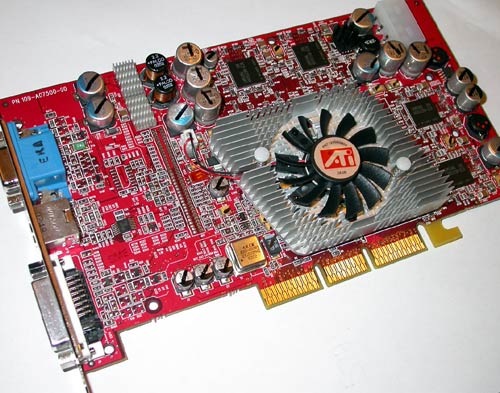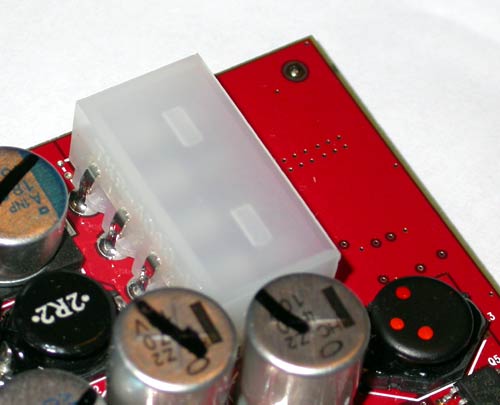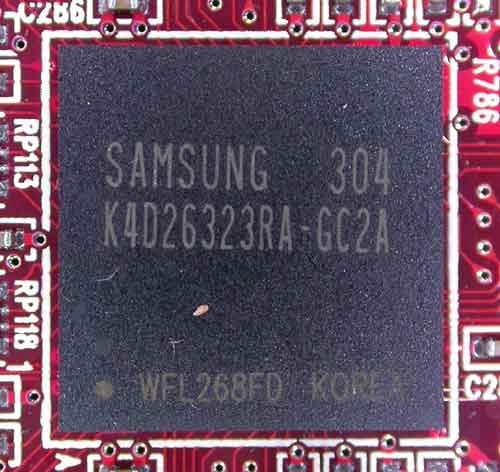video
|
|
IntroductionAround the Comdex timeframe there were rumors that NVIDIA's GeForce FX would not only be severely delayed, but it would also have a tough time outperforming the Radeon 9700 Pro. Although tough to believe at the time, when push came to shove, a combination of issues surrounding anisotropic filtering quality, drivers that weren't ready for prime-time and a launch that should never have happened left the GeForce FX as an product inferior the Radeon 9700 Pro. As we concluded in our review of the GeForce FX however, the true test of ATI's and NVIDIA's might will not come at the absolute high-end, but rather in the rest of the market. Today ATI is continuing to extend their dominance at the high-end with the introduction of their much talked about R350 core, but alongside that you'll find two new products that carry the ATI name - the RV350 and RV280. Much like NVIDIA, we find ATI refreshing all members of their product line this Spring (although not to the same degree NVIDIA is, as you'll find out shortly) in order to remain competitive until the Fall. Historically, it is the Spring refresh parts that are the most attractive to purchase, since they are essentially more refined, higher clocked versions of the parts that were released last Fall - at the same price. With all of the products we're talking about today shipping in the next two months, let's find out if any of them are worth waiting for… |
The R350 - A Tweaked R300Toss away all the rumors you've heard, ATI's new flagship is nothing more than a higher clocked, slightly enhanced version of the R300 core. If you'll remember back to our original overclocking investigation with the R300 you will recall that we were able to clock the 0.15-micron R300 core at an impressive 400MHz, very early on its production cycle. We had an idea of what the R350 would be back then, and to all careful readers, you knew about the core well ahead of today's launch date. When a GPU is designed, the entire chip is actually "written" in a programming language known as a HDL (Hardware Description Language); basically, the HDL code is what defines everything that goes into the chip (click here for a more thorough description on how GPUs are made). For the R350, ATI made only minimal changes to the code behind the R300. The extent of the changes were limited primarily to improving Hyper-Z III, more specifically in enhancing the Z Cache and optimizing it for the next-generation of games. There have also been improvements to ATI's Z and Color compression algorithms that improve performance in AA modes, since the algorithms aren't active in non-AA environments. Other than the aforementioned improvements to the core, the rest of the feature set remains identical to the R300 - meaning with the R350 we essentially have a more efficient R300. The other improvement, as we alluded to seven months ago in our Gigabyte Radeon 9700 Review, comes in the form of higher clock speeds. The first product the R350 will be available in is the Radeon 9800 Pro, which will be shipping at a 380MHz core clock, and a 340MHz DDR memory clock (effectively 680MHz). Note that this is a 17% increase in core clock and a ~10% increase in memory clock; the reason for pushing for a higher core clock was in order to keep the price of the Radeon 9800 Pro at $399.
ATI will also be releasing a non-Pro version of the Radeon 9800 ($349), with lower clocks, and a Radeon 9800 Pro with 256MB of memory on-board. The 256MB Radeon 9800 Pro will carry a significant price premium, but it's unknown whether or not ATI will try for higher clock speeds on those boards. The Radeon 9800 Pro will begin shipping this month, with the non-Pro and 256MB cards coming sometime in the second quarter. |
The R350 vs. R300 - Winning the Efficiency BattleWe can measure the impact of just the improvements to the core by clocking the R350 (Radeon 9800 Pro) at the same speeds as the R300 (Radeon 9700 Pro), and running a quick set of AA and non-AA benchmarks. For this impromptu comparison we used our favorite benchmark - UT2003:
As you can see, without AA or Anisotropic filtering enabled, the Radeon 9800 Pro at the same frequency, is not any faster than the Radeon 9700. But see how things change once we enable AA/Aniso:
With 4X AA and 8X Performance Anisotropic filtering enabled, the Radeon 9800 Pro's R350 core is already 9% faster than the Radeon 9700 Pro. But watch what happens when we put even more stress on the memory bus:
At the same clock speeds the new R350 core is no less than 30% faster across the board with 4X AA and 8X Quality Aniso enabled, not too shabby at all. ATI's improvements in their compression algorithms and the memory controller clearly come in handy when AA and Anisotropic filtering are turned on, effectively making the Quality Anisotropic filtering mode a useable option with the Radeon 9800 Pro. |
ATI's first 0.13-micron GPU - The RV350If the R350 is the successor to the R300, then the RV350 makes sense as the clear successor to the RV300 - what eventually found its way into the Radeon 9500 Pro. To understand the inspiration for the RV350 you have to understand that the Radeon 9500 Pro was absolutely a very hurried project for ATI; the number of successes people had in turning their Radeon 9500 Pros into Radeon 9700 Pros is evidence enough that ATI didn't really make the RV300 a new core. With the RV350, ATI had the opportunity to start anew, since they moved to a new manufacturing process (0.13-micron vs. 0.15-micron). The base of the RV350 remains the same as the Radeon 9500 (non-Pro): DX9 support, 4 pixel pipes, 1 texture per pipe, and 2 x 64-bit memory controllers. Moving to a new manufacturing process is never a simple task, as it requires a re-layout of the chip, as well as a good amount of analog engineering to make sure that everything works at the lower voltages with the smaller, lower power transistors. Since ATI was going to have to redo the layout of the core, they took it upon themselves to make improvements where necessary. The biggest performance bottleneck of the Radeon 9500 Pro was the fact that the memory interface was still basically half of a 9700 Pro, meaning that all the buffers were still optimized for a 4 x 64-bit memory controller layout and not the 2 x 64-bit configuration that the 9500 Pro actually used. With the RV350, the entire memory interface is optimized and tuned for a 128-bit memory interface, thus extracting a bit more performance out of the core. The RV350 doesn't stop there, and actually features a superior Hyper-Z engine to what is found in the R350; the reason being that with a 0.13-micron chip you've got more room to play around with and ATI wasn't as constrained with the design of the RV350 as they were with the R300. The end result is that the RV350 features a higher Z compression ratio (8:1 vs. 6:1) and an overall more efficient memory controller; we will have to wait until the 0.13-micron successor of the R350 before see an improved version of the RV350 memory controller in ATI's flagship line. The RV350 will be made available in two forms - the Radeon 9600 Pro and the Radeon 9600. The Pro will feature a 400MHz core clock and 300MHz DDR memory (effectively 600MHz), while the non-Pro will be clocked at 325/200DDR (effectively 325/400). Note that both of the engine clocks are higher than the Radeon 9500 Pro (45% and 18% for the Pro and non-Pro, respectively), but only the Pro features more raw memory bandwidth. Remember that the Radeon 9500 Pro will enjoy higher fill rates courtesy of its 8-pipe design, but the Radeon 9600 Pro's higher clock rate and significantly improved memory controller should be able to eat into that advantage. Both 9600 products will be shipping in April and will carry price tags of $149 - $169 for the non-Pro and $169 - $199 for the Pro. The Radeon 9200 - A Rebadged Radeon 9000The final product of the day is ATI's Radeon 9200, based on the RV280 core. The Radeon 9200 is nothing more than an AGP 8X version of the Radeon 9000, yet it carries a higher model number; marketing at its best, go figure. There is a chance the Radeon 9200 Pro could be higher clocked than the Radeon 9000 Pro, but we'll have to wait until April before confirming that. |
The TestWe conducted the exact same tests we did in our GeForce FX review, so please refer back to that review for details on how we decided what AA/Aniso settings to compare and why. Since the focus of this review is the performance of the fastest desktop GPUs available there are a few assumptions we can make, the biggest being that you don't buy a card like the Radeon 9800 Pro to run without Anti-Aliasing or Anisotropic Filtering enabled. For this reason the vast majority of our benchmarks will be focused on the performance with AA/AF enabled, but we will include an abridged set of numbers without those features turned on to be as complete as possible.
| ||||||||||||||||
Quick Performance Intro (AA/AF Disabled)Before we get into the truly strenuous benchmarks let's have a look at some scores without AA & Anisotropic Filtering enabled.
At 1024x768 the performance of all three of these cards is significantly limited by the combination of the test CPU, platform and drivers, which is why they all end up performing quite similarly.
As we up the resolution, the GeForce FX 5800 Ultra begins to separate, in this case outperforming the Radeon 9800 Pro by around 3%.
The GeForce FX's lead extends to just over 9% at 1600x1200, but let's see how the picture changes once we enable AA and Anisotropic filtering... |
Antialiasing & Anisotropic Filtering QualityFor a look at how the Radeon 9x00 and the GeForce FX compare in terms of AA & Aniso image quality, refer back to our GeForce FX Review. AA+AF Performance - UT2003To test these cards the way they were meant to be used we used the settings we discovered would be the best for each solution. For the GeForce FX we ran with the following settings enabled:
The Radeon 9800/9700 Pro were run with the following enabled:
For comparison purposes we also threw in a Radeon 9x00 Pro with 8X Quality Anisotropic Filtering enabled for image quality purists, but we think that the performance setting is the best option for Radeon 9x00 Pro owners and prefer its tremendous performance advantage over the slight reduction in image quality. The comparison you'll want to make is between the GeForce FX 5800 Ultra (4X AA/8X Bal Aniso) and the Radeon 9x00 Pro (4X AA/8X Perf Aniso). As usual, we'll start with performance under Unreal Tournament 2003:
The Radeon 9700 Pro originally did very well in this test, but the Radeon 9800 Pro puts it to shame. With 4X AA and Performance Aniso enabled, the Radeon 9800 Pro is 22% faster than the Radeon 9700 Pro; enabling Quality anisotropic filtering gives the Radeon 9800 Pro an amazing 47% lead.
The performance standings do not change as we increase the resolution; the improvements remain at around 23% and 47% for the performance and quality settings respectively.
What's interesting to note here is that the Radeon 9800 with 4X AA/8X Quality Anisotropic filtering is faster than the Radeon 9700 Pro with 4X AA/8X Performance Anisotropic filtering, a testament to the improvements ATI made to the R350 core. |
AA+AF Performance - Serious Sam 2
With Serious Sam 2, the performance improvement of the Radeon 9800 Pro over the 9700 Pro doesn't start off as great as what we saw under UT2003. The Performance settings left us with a 15% performance gain, and the Quality settings enjoyed a healthy 24% increase.
Minimum frame rates didn't receive as big of a jump, although we're looking at performance gains of anywhere from 10% to 29% over the 9700 Pro; still quite impressive.
As we up the resolution, the performance advantage of the Radeon 9800 Pro grows - this time 19% in Performance mode, and just over 25% in Quality mode.
The Radeon 9800 Pro does equally well in improving minimum frame rates in Serious Sam 2, boasting gains of 18% and 20% for Performance/Quality modes.
|
AA+AF Performance - Q3A, Jedi Knight 2 & Comanche 4For this next set of benchmarks we took three games that weren't GPU bound to begin with, and cranked up the resolution and AA/AF settings until we could see some differences between the ATI and NVIDIA offerings. We'll start out with a classic benchmark, Quake III Arena:
Even in an old game like Quake III Arena, the Radeon 9800 Pro is able to deliver a 12% increase in performance if you turn up all of the settings at 1600 x 1200. Although admittedly, if you're still playing Quake III then you definitely don't need a Radeon 9800 Pro.
For CPU bound games like Jedi Knight 2, the performance increase offered by the Radeon 9800 Pro isn't going to be anything tremendous - as you can clearly see here by the 0 - 15% spread. What's interesting to note is that performance didn't improve at all when Quality Aniso was used, whereas we saw a 15% boost with the Performance setting.
|
AA+AF Performance - Codecreatures CodeBenchCodecult's Codecreatures engine has been turned into a fairly interesting DirectX 8.1 benchmark. Without widespread use of the engine this test ends up being no better than a synthetic benchmark, but it's interesting to see the results to help get an idea for how these cards perform under intense DirectX 8.1 applications.
The Codecreatures benchmark has been a fan of the GeForce FX, as you can tell by its stellar performance here. Improving performance across the board is what is absolutely necessary for the future of the FX line to be successful. |
OverclockingWhen we first took a look at the 0.15-micron R300 core, we were able to overclock it from its stock 325MHz core clock to close to 400MHz in a lot of cases. With the R350, although we're still dealing with the same 0.15-micron process, it is over 6 months more mature and thus we can expect even higher clock speeds. We were quite pleased to be able to overclock the Radeon 9800 Pro from its stock 380/340MHz clocks to 420MHz core and 380MHz memory, without any visual artifacts (at 430MHz core we started to develop artifacts, the same applies to higher memory clocks as well). Note that this is an increase of 10% to the core and 11% to the memory clocks of the Radeon 9800 Pro, not too shabby at all considering we're still dealing with a 0.15-micron core without any excessive cooling.
The overclock yielded a 10 - 12% increase in performance with 4X AA and Performance Anisotropic Filtering enabled.
We continue to see a 10 - 12% increase in performance with the Quality Anisotropic filtering setting selected. |
Final WordsMore than just a higher clocked Radeon 9700, the Radeon 9800 Pro doesn't cease to impress because of the minor but potent improvements ATI made to the R350 core. Definitely a pleasant surprise, ATI has produced a worthy interim successor to the Radeon 9700 Pro. If you want the best out today, look no further than the Radeon 9800 Pro; it's quiet, faster, occupies a single slot, and will enjoy much wider availability than the GeForce FX. NVIDIA will not have a chance to respond to the Radeon 9800 Pro for another couple of months, with their NV35 part. NVIDIA has NV35 up and running and it is already significantly better than the lackluster NV30; although we're not sure if it will be able to outperform the Radeon 9800 Pro, at this point we can say that from what we've seen, NVIDIA has regained some of our confidence. The most interesting battle will occur between the Radeon 9600 Pro and NVIDIA's forthcoming NV31 part (look for a preview of the technology later today), we're hard at work at bringing you all benchmarks of both cards so stay tuned for those reviews as well... |



